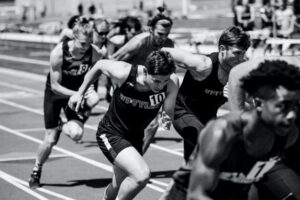
Varicose veins are stretched out or enlarged because of blood that collects in your legs. As one sign of vein disease, people with varicose veins may also develop:
Now, pooling blood is one of the main causes of varicose veins. As such, getting active can help get your blood pumping—and can help manage some of your painful symptoms. Even better? If you don’t yet have vein problems, getting more exercise could help prevent them from forming. Not sure where to start? Here are the best exercises for varicose veins.
No one can totally protect themselves against varicose veins. But regular exercise can lower your risk for this condition. In fact, doing something as simple as regularly switching from a sitting to a standing position could boost your circulation, in turn getting blood up and out of your legs.
Plus, when you exercise, you make it easier for your body to pump that blood out of your legs even when you aren’t working out. And, exercise can help you maintain a healthy weight, removing excess pressure from your veins. Not a major gym-goer? Not a problem. Even low-impact activities such as swimming, walking or biking can make a major impact on your vein health.
Already have varicose veins, and looking to improve symptoms? To help prevent progression, and alleviate some of your discomfort, try some of these low-impact exercises that still have a major benefit for your health:
Taking a 30 minute stroll five days a week can boost your vein health. You could also try running, but if you do, try to train on softer surfaces such as grass or a trail, to avoid stressing out your joints.
Practicing regular leg lifts—without any equipment, and from the comfort of your home—is one of the best exercises for varicose veins. Here’s the best technique: lie on your back, or sit on the ground, with your legs straight in front of you. Lifting one leg at a time, holding it up in the air for a few seconds, before slowly lowering the leg and beginning on the next one.
Hitting a stationary bike or bicycle is a great exercise for varicose veins, since it strengthens your calf muscles, helping them pump blood out of your legs. No bike access? Again, no problem: just get your legs moving as if they were on a bike. To try this, just lie on your back you’re your legs in the air. Bending at the knee, pedal each leg slowly, alternating sides or moving both at once.
Lunges build leg muscles, helping support better circulation. To lunge properly, without hurting your knees, start by standing with your legs apart. Slowly step forward, bending the knee and keeping it directly above the ankle. Hold that position, then slowly straighten the leg, stepping back to the starting position. Repeat with your second leg. Then, between reps, try raising up on your tiptoes—with straight legs—holding the position for a few seconds, then lowering down again slowly.
Thanks to Dr. Laura Bolton, a member of the Wounds advisory board, we know that structured exercise training (SET) can help you heal venous and diabetic ulcers at a faster pace. And one of the most important SET exercises are calf raises, because they get you some cardio and help improve lower extremity circulation.
In fact, her study revealed that 77% of venous leg ulcer patients fully healed their wounds after 12 weeks of progressive exercise. In comparison, only 53% of non-exercisers fully healed their ulcers. As a result, Bolton believes: “The more patients engage in calf muscle exercise, the more and earlier they improve their chronic VLU or DFU healing.” Here’s how to start your own calf raising routine.
It’s easy to practice standing calf raises on a staircase, placing your hands against the wall or railing, then letting your heels hang off the back stair ledge. Raise the heels a few inches while standing on tip toes, holding the position for a moment before lowering your heels again, to the point that your calf muscles feel a stretch. Aim to repeat this movement 10-15 times, recognizing that you may not be able to complete a full set the first few times you try it.
While exercise for varicose veins can help manage your symptoms, most patients will need medical intervention for lasting relief. At Georgia Endovascular, we offers minimally invasive, in-office procedures that resolve vein health concerns without general anesthesia or sedation. We offer several varicose vein treatments, each with little to no recovery time. In fact, most patients can go back to work on the same day as their procedure; the treatment we select depends on your unique symptoms and experience.click here to request an appointment
Sources: Bolton, Laura, MD. "Exercise and Chronic Wound Healing." Azura Vascular Care

Scheduling
Please contact our dedicated specialists to schedule a consultation today.
2024 Georgia Endovascular. All rights reserved. Website Design by Healthcare Success